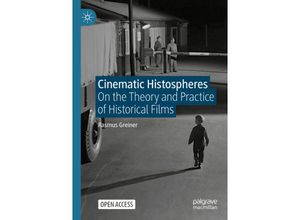In this Open Access book film scholar Rasmus Greiner develops a theoretical model for the
concept of the histosphere to refer to the sphere of a cinematically modelled physically
experienceable historical world. His analysis of practices of modelling and perceiving
immersion and empathy experience and remembering appropriation and refiguration combine
approaches from film studies such as Vivian Sobchack's phenomenology of film experience with
historiographic theories such as Frank R. Ankersmit's concept of historical experience.
Building on this analysis Greiner examines the spatial and temporal organization of historical
films and presents discussions of mood and atmosphere body and memory and genre and
historical consciousness. The analysis is based around three historical films spanning six
decades that depict 1950s Germany: Helmut Käutner's Sky Without Stars (1955) Jutta Brückner's
Years of Hunger (1980) and Sven Bohse's three-part TV series Ku'damm 56 (2016).



